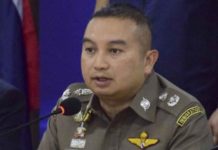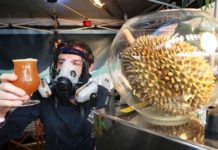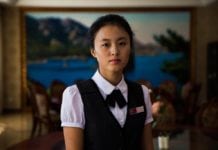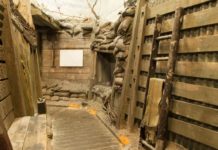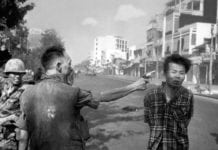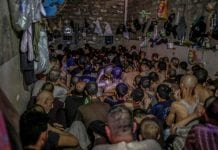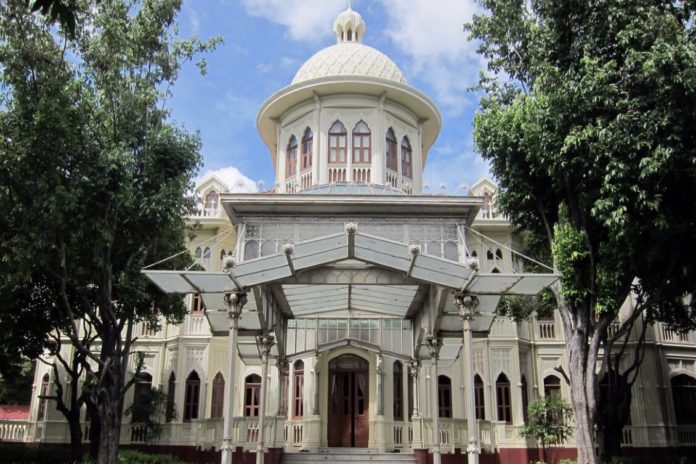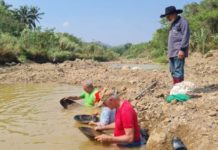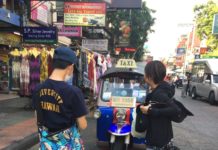The United States has the White House and the UK has 10 Downing Street, but in Thailand it is Ban Phitsanulok that serves as the national leader’s official residence.
However, over the past four decades, only two Thai prime ministers have actually lived there – with one of them just for a few days.
General Prayut Chan-o-cha, who has led the government since 2014, has never stayed at this imposing residence designed by Mario Tamagno, an Italian architect who helped create the grand Ananta Samakhom Throne Hall.
Since taking office six years ago, Prayut has preferred to live at his Army quarters – a choice which recently landed him in the dock at the Constitutional Court.
The opposition filed the case, accusing the PM of violating the supreme law by receiving military privileges after retiring as Army chief in September 2014.
On Wednesday, the court ruled Prayut had done nothing wrong, and accepted his explanation that he could stay inside the Army’s compound because he was qualified under a regulation for being a former Army’s chief with huge contributions and that he couldn’t move in to Ban Phitsanulok as it is currently being renovated.
However, history suggests the premier will never move to his official residence, since given the choice, his predecessors have almost always opted out.
Shunned by prime ministers
Ban Phitsanulok was originally proposed as the official residence of Thai leaders in 1979, when then-prime minister General Kriangsak Chamanan ordered that the mansion be renovated.
The renovation work on Thailand’s “White House” was completed in time for his successor, General Prem Tinsulanonda, to move in. However, Prem spent barely a week inside the residence before moving into his own home, the Si Sao Thewes mansion.

The same goes for the next three Thai prime ministers – Anand Panyarachun, Banharn Silapa-archa and General Chaovalit Yongchaiyudh all decided to shun Ban Phitsanulok in favour of their own homes.
Next came Chuan Leekpai, who stayed away from the mansion at first, but then had to move in briefly during his second term because his home in Bangkok’s Soi Morleng was being repaired.
Ban Phitsanulok then fell empty again as premiers Thaksin Shinawatra, Abhisit Vejjajiva, Yingluck Shinawatra, and General Surayud Chulanont all chose to stay away.
Strange sightings
Not surprisingly, rumours began circulating that the grand empty house was haunted.
Stories of strange sounds and sightings in the mansion’s grounds have been swirling for years now. One official said members of staff have heard the sounds of galloping horses emanating from the bronze horse that stands proud in the garden.

“A drunken teenager once said he saw the ghost of woman wearing old-fashioned clothes in the compound. I don’t know if that was a real spirit or if his imagination was running wild under the influence of alcohol,” the official said.
Senior politics reporters have admitted that Ban Phitsanulok looks spooky and desolate in the dark – an impression amplified by eerie creaking sounds at night. The mansion is made of wood, which makes strange noise as it expands and contracts according to the temperature.
Deputy Prime Minister Wissanu Krea-ngam recently dismisses the idea that prime ministers have shunned the house because of rumours it is haunted. Instead there are purely practical reasons why they choose not to stay there.
“The house is not soundproof, which means you can be disturbed by noise from outside. And even if you’re on the third floor, you can hear what people on the first floor are saying,” he said.
Others say Ban Phitsanulok looks more like a reception building than a real home, so it’s no surprise that premiers don’t want to move in with their families.
So who has lived there?
In fact, no one has taken permanent residence since the 1930s, when it was known as Ban Banthomsin. The mansion was built in 1922 as a grand residence for King Rama VI’s favourite aide-de-camp, Maj-General Phraya Aniruttheva.
Ban Banthomsin’s grounds initially spanned more than 50 rai (8 hectares) and included outbuildings, a large garden, ornamental lake, a small wood and a shrine.

Descendants of Phraya Aniruttheva decided to abandon the mansion due to hard times brought on by the 1930 global recession and the 1932 Siamese Revolution. On June 19, 1942, the mansion along with about half of the compound was sold to the government for Bt500,000.
The new government acquisition was initially used as a centre for coordination between Thailand and Japan during World War II. In 1943, then-premier Field Marshal Plaek Pibulsongkram hosted his Japanese wartime counterpart Hideki Tojo at the house, which was renamed the Thai Alliance Mansion.
The residence has had many names over the years, but has been known as Ban Phitsanulok since 1953. – Thai PBS




